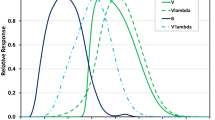Abstract
The tropopause, typically at 16 to 18 km altitude at the lower latitudes, dips to 8 km in the polar regions. This makes the cold, dry and nonturbulent lower stratosphere accessible to tethered aerostats. Tethered aerostats can fly as high as 12 km and are extremely reliable, lasting for many years. In contrast to free-flying balloons, they can stay on station for weeks at a time, and payloads can be safely recovered for maintenance and adjustment and relaunched in a matter of hours. We propose to use such a platform, located first in the Arctic (near Fairbanks, Alaska) and, potentially, later in the Antarctic, to operate a new technology 6-meter, diluted aperture telescope with diffraction-limited performance in the near infrared. Thanks to the low ambient temperature (220 K), thermal emission from the optics is of the same order as that of the zodiacal light in the 2 to 3 micron band. Since this wavelength interval is the darkest part of the zodiacal light spectrum from optical wavelengths to 100 microns, the combination of high resolution images and a very dark sky make it the spectral region of choice for observing the redshifted light from galaxies and clusters of galaxies at moderate to high redshifts.
Similar content being viewed by others
References
Bruning, J.H., et al.: 1974, ‘Digital wavefront measuring interferometer for testing optical surfaces and lenses’,Applied Optics 13, 11, 2693
Cornwell, T.J.: 1988, ‘A Novel Principle for Optimization of the Instantaneous Fourier Plane Coverage of Correlation Arrays’,IEEE Tr. AP-8, 1165
Gilmore, J., et al.: 1992, ‘Inertial Pseudo-Star Reference Unit’,IEEE Proc. PLANS Symposium.
Kishner, S.J.: 1991, ‘High bandwidth alignment sensing in active optical systems’,Proc. SPIE, Analysis of Optical Structures 1532, 215
Nastrom, G.D., Gage, K.S., Balsley, B.B.: 1982, ‘Variability ofC 2n at Poker Flat, Alaska, from mesosphere, stratosphere, troposphere (MST) Doppler radar observations’,Opt. Eng. 21, 347
Nastrom, G.D., Gage, K.S., Ecklund, W.L.: 1986, ‘Variability of turbulence, 4–20 km in Colorado and Alaska from MST radar observations’,J. Geophys. Res. 91, 6722
Schroeder, D.J.: 1987,Astronomical Optics, (San Diego, CA: Academic Press) 5
Wilson, R.N.: 1994, ‘Karl Schwarzschild and telescope optics’,Rev. Mod. Astron. 7, in press
Author information
Authors and Affiliations
Additional information
Affiliated to the Astrophysics Division, Space Science Department, European Space Agency
Rights and permissions
About this article
Cite this article
Bely, P.Y., Ford, H.C., Burg, R. et al. Post: Polar stratospheric telescope. Space Sci Rev 74, 101–112 (1995). https://doi.org/10.1007/BF00751258
Issue Date:
DOI: https://doi.org/10.1007/BF00751258




